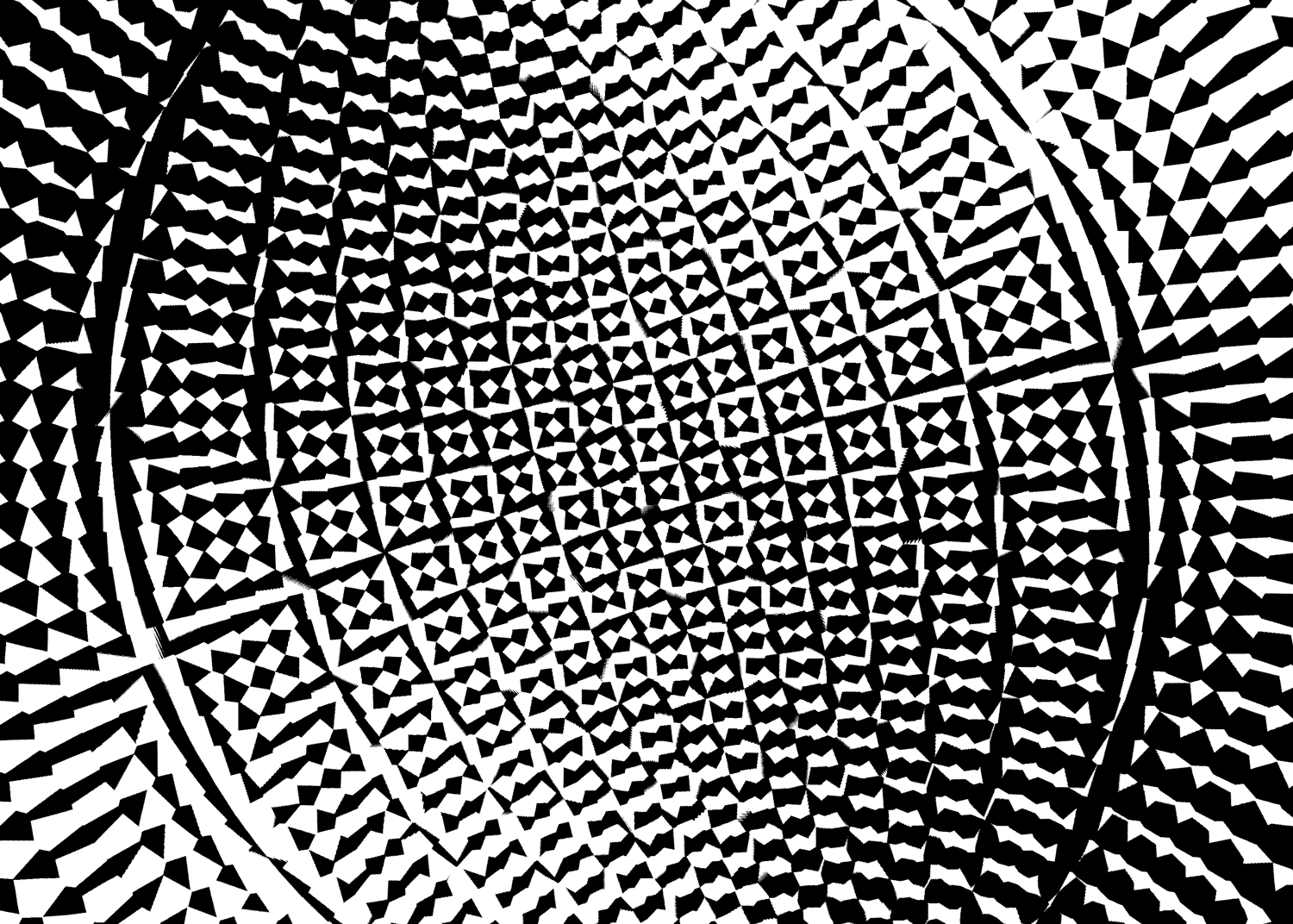Distinction Machine
Creating conflicts within the computer- Time
- –
- Location
- virtual

Distinction Machine
By rendering shapes of different colors in the same location, the computer reveals its incapacity of representing ambiguity. In these experiments, a computer-mediated aesthetic of strange and intricate patterns emerges.
Intro: distinctionmachine.kimalbrecht…
Main: distinctionmachine.kimalbrecht…
When the computer is asked to perform the simple task of rendering shapes of different colors on the same position, it is confronted with a problem of “determining” which color to display. Instead of deciding for the one or the other, or blending colors, the machine creates strange and intricate patterns.
In Computer Science, this is known as “Z-Fighting,” and considered an error. This experiment sees it not as a fallacy, but a revelation of how these machines fundamentally operate. The images are a reflection of computation, visualizing the process of how electric currents move through silicon circuits.
The significance is the implication that computers function fundamentally differently than humans do. We’re always in-between, and the ambiguity of human language describes our fluid, paradoxical reality. But computational language is incapable of ambiguity, and so it can never describe the world we actually live in.
Further, and perhaps more importantly, this binary restriction of computational language creates a restriction of human expression, and even thought. This is the opposite of how we usually think of using computer systems, which is one of liberation, not restriction. Ultimately, having our world filtered through computational language influences us to think in falsely defined, often binary terms. Yet we experience the world in ambiguous shades of gray, not sharply defined black and white. The computer is a distinction machine, but humans are not.
Distinction Machine is a project by Kim Albrecht in collaboration with metaLAB (at) Harvard, and supported by the Berkman Klein Center for Internet & Society. The project is part of a larger initiative researching the boundaries between artificial intelligence and society.
